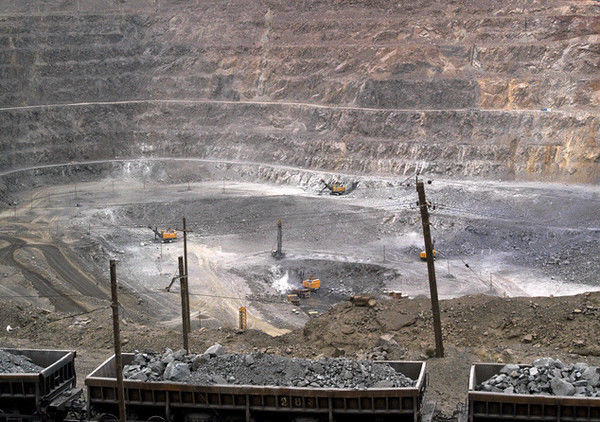Editorial: Rare earth mining makes green energy not-so-green
Published 9:23 am Tuesday, March 28, 2017

- In this July 6, 2010 file photo, workers use machinery to dig at a rare earth mine in Baiyunebo mining district of Baotou in north China's Inner Mongolia Autonomous Region. The World Trade Organization ruled Wednesday, March 26, 2014 in a case brought by the U.S., EU and Japan that China has violated international trade rules with its restrictions on exports of 17 rare earths and two other minerals that have key industrial and high-tech uses. (AP Photo)
In Monday’s Tyler Area Energy Summit, Ken Morgan, PhD., director of the Texas Christian University’s Energy Institute, brought up an important element of green energy – several elements, in fact – which make it not-so-very green.
Rare earth elements, also known as rare earth metals, are the materials that make the high-tech “green revolution” possible. And extracting them is environmentally devastating.
“China controls 97 percent of the world’s supply of rare earth metals,” he said. “Do you think China is worrying about the environmental impact (of extracting them)?”
Producing one ton of rare earth metals, he said, results in one ton of liquid radioactive thorium waste. Plus, 10,000 cubic meters of waste gases, and 2,000 tons of mine tailings. Extracting rare earth metals is environmentally devastating, Morgan said.
“And just one wind turbine in West Texas uses 1,000 pounds of rare earth metals,” he said. “That’s half a ton.”
According to the American Wind Energy Association, there are currently more than 52,000 wind turbines operating in the United States.
The same goes for solar energy. Rare earth metals are used in every part, from the solar panels that convert the sun’s energy into electricity, to the batteries that store it.
Here’s the problem with rare earth metals, according to a report from the Massachusetts Institute of Technology.
“Most rare earth elements are mined through open pit mining, which involves opening the surface of the earth using heavy equipment and machinery,” MIT says. “Creating this disruption on the surface of the earth disrupts thriving ecosystems. Furthermore, mines are the point source of release for three major contaminants: are radionuclides, rare earth elements, and dust and metal. Each of these contaminants escapes the mines in different ways and they each have different detrimental effects on the environment.”
Refining rare earths is also a dirty process.
“This refining process introduces another set of environmental concerns, mostly revolving around the release of metal byproducts into the environment,” the university notes. “It is very easy for metals to enter the air, ground, or waters in an environment, and once there it is nearly impossible to remove them. The metals in an environment can also prove devastating to organisms.”
Humans are some of those organisms at risk.
As the London Guardian noted in 2012, when it reported on a village near a rare earths mine, “The foul waters of the tailings pond contain all sorts of toxic chemicals, but also radioactive elements such as thorium which, if ingested, cause cancers of the pancreas and lungs, and leukemia.”
As TCU’s Morgan explained on Monday, every form of energy comes at some cost.
“There is no free energy,” he said. “There’s always a price; with any energy use, always waste and pollution.”
So the next time you hear someone claim that an electric car is an environmentally friendly vehicle, remind them of Morgan’s simple truth.
Aside from the coal (or natural gas, or petroleum, or nuclear power) that produced the electricity to charge that vehicle, there are the rare earth metals that make it possible.






